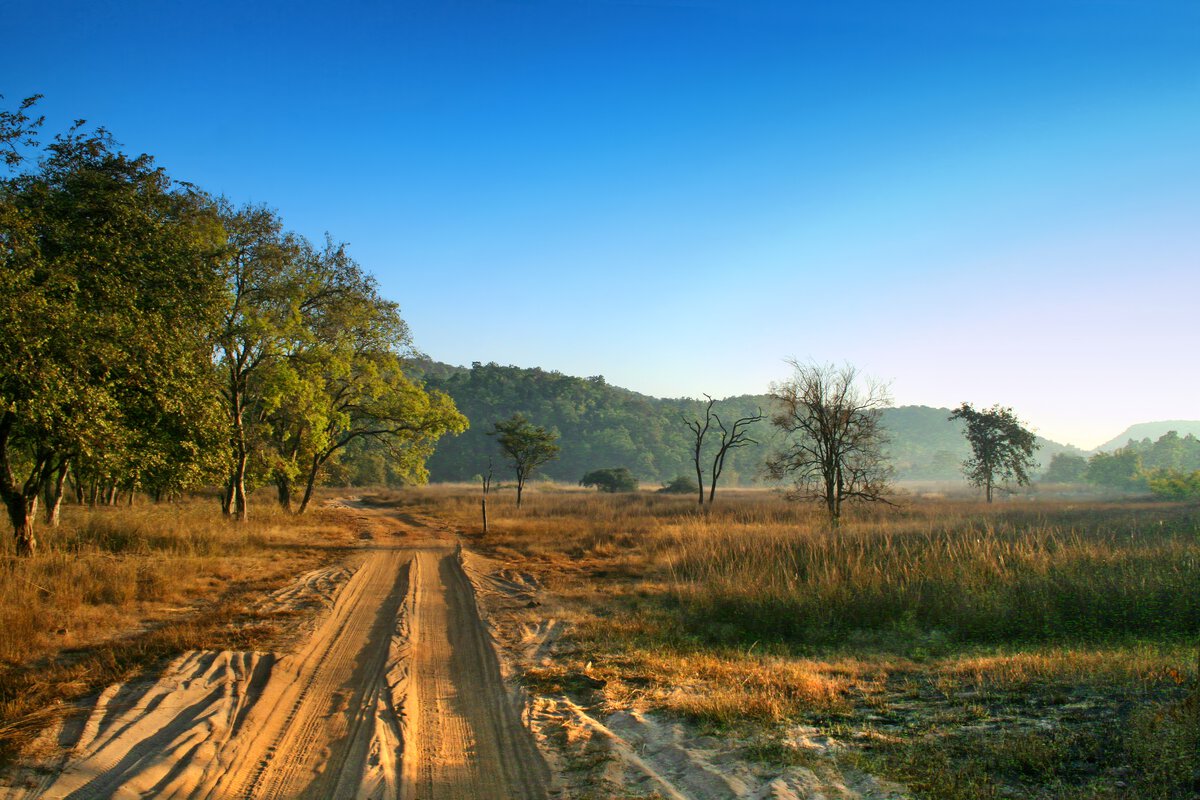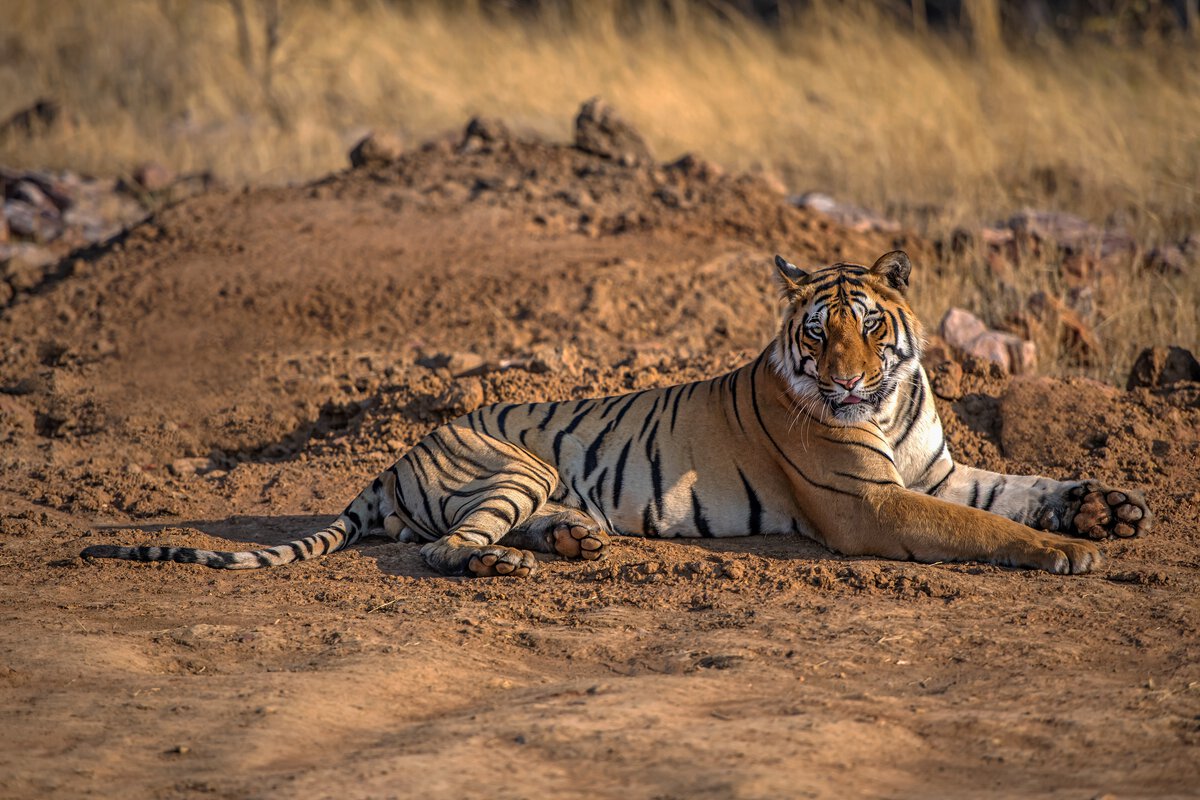July 11, 2022
International Tiger Day: 9 Facts to Celebrate these Magnificent Creatures
CM Content Team


View all
140+
Resorts
July 11, 2022
CM Content Team
Every year, July 29 is celebrated as International Tiger Day. The main objective of this day is to create awareness about the importance of preserving the tiger population in the world and protecting their natural habitat. Once upon a time, the Indian forests were replete with wild tigers, but over the years, their population dwindled significantly, so much so that they were on the verge of extinction.
According to the World Wide Fund for Nature (WWF), the wild tiger population worldwide dropped by more than 95% over the last 150 years. This was due to many reasons like poaching, climate change, increased tourism activities, loss of natural habitat, and spread of diseases among tigers.
However, because of the continuous efforts by various governments and institutions to conserve tiger population and their natural habitat, their numbers are on the rise. Currently, the total population of tigers around the world is about 4500. The tiger population is stable and increasing in countries like India, Bhutan, Nepal, Russia and China.
As the world celebrates International Day of Tiger, we have compiled some amazing facts about tigers.
World Tiger Day came into existence in 2010 during the Saint Petersburg Tiger Summit held in Russia to encourage tiger conservation. During the summit, a declaration was issued to save tigers and all the tiger-populated countries in the world vowed to double the population of wild tigers by 2022.
Since 2010, every year, many animal welfare-related organisations like WWF, Smithsonian Institute and IFAW, organise many events to celebrate the day and raise awareness to save tigers.
Take the time to learn more about tigers, their habitats, and the challenges they face. Read books, and watch documentaries to deepen your understanding. Use social media platforms or personal networks to share interesting facts, statistics, and stories about tigers. Raise awareness by posting about the importance of tiger conservation and the threats they face.
Many international organisations use the World Tiger Day to raise funds from people to carry on their conservation efforts. If you resonate with the cause, you can donate funds for such charity organisations and encourage your friends and families to donate as well.
Contribute to anti-poaching initiatives that work towards eliminating illegal wildlife trade and protecting tigers from poaching activities. These efforts are crucial in ensuring the survival of tiger populations.
When traveling, choose tiger reserves or wildlife sanctuaries that follow responsible tourism practices. Avoid supporting activities that exploit tigers or their habitats for entertainment purposes.
Recent tiger census data reveals a remarkable surge in India's tiger population. The latest figures indicate a substantial increase from the previous census conducted in 2006, which reported 1,411 tigers. The current data proudly showcases a thriving tiger population of 3,167 in India as of 2022. This significant rise positions India as the custodian of approximately 75% of the global tiger population. And, a lot of the credit for this goes to the tiger reserves in India that play a vital role in preserving the big cats in the forests. At present, there are 53 tiger reserves in India. These protected forests ensure that tigers are saved from illegal poaching, and trading activities.
These tiger reserves also encourage tiger tourism and raise funds for the protection of the forests and the tigers. Some of the popular tiger reserves in India are the Sunderban in West Bengal, Kaziranga National Park in Assam, Bandhavgarh National Park in Madhya Pradesh, Jim Corbett National Park in Uttarakhand, to name a few.
There are numerous wildlife parks and tiger reserves across the country that offer thrilling opportunities to spot these majestic creatures in their natural habitat:

Nestled in the foothills of the Himalayas in Uttarakhand, Jim Corbett National Park is India's oldest national park and a haven for Bengal tigers. The park's diverse topography, including dense forests, riverine belts, and grassy meadows, provides an excellent environment for tigers to thrive. Jeep safaris are popular here to explore the park and catch glimpses of these elusive predators.
Best place to stay near Jim Corbett National Park:
Club Mahindra Corbett Resort in Nainital

Located in Madhya Pradesh, Kanha National Park is known for its vast expanses of Sal forests and wide grassy meadows. Kanha is home to a significant tiger population, and its open grasslands make tiger sightings relatively easier. The park also has other wildlife species, such as leopards, sloth bears, and Indian wild dogs.
Best place to stay near Kanha National Park:
Club Mahindra Kanha Resort

Situated in Madhya Pradesh, Bandhavgarh is famous for having one of the highest densities of tigers in India. The park's dense forests, rolling hills, and open grasslands create an ideal habitat for tigers and other wildlife species. With the assistance of experienced guides, tourists have a high chance of spotting tigers during safaris in Bandhavgarh.

Tadoba Andheri Tiger Reserve in Maharashtra is a lesser-known gem that offers a unique and intimate tiger spotting experience. With dense forests, serene lakes, and abundant prey, the reserve provides an ideal habitat for tigers. Jeep safaris allow tourists to explore the reserve's diverse flora and fauna while increasing the chances of tiger sightings.
These wildlife parks and tiger reserves in India not only offer thrilling opportunities to spot tigers but also play a crucial role in their conservation. By visiting these parks responsibly and supporting conservation efforts, you can contribute to the protection of these creatures and their habitats, ensuring their survival for future generations to admire and appreciate.
Mahindra Holidays & Resorts India Ltd. (MHRIL), a part of Leisure and Hospitality sector of the Mahindra Group, offers quality family holidays primarily through vacation ownership memberships and brings to the industry values such as reliability, trust and customer satisfaction. Started in 1996, the company's flagship brand ‘Club Mahindra’, today has over 300,000 members , who can holiday at 140+ resorts in India and abroad.
We use cookies to personalise content and to provide you with an improved user experience.By Continuing to browse this site you consent to the use of cookies.Please visit our cookie policy for further details.

Welcome to ClubMahindra.com In order to provide a personalised experience for you, we use cookies to enable some website functionality. Cookies help us see which articles most interest you; allow you to easily share articles on social media channels; permit us to deliver content personalised to your interests and locations; along with many other site benefits. For more information, please review our Cookie Policy
When you visit any website, it may store or retrieve information on your browser, mostly in the form of cookies. This information might be about you, your preferences or your device and is mostly used to make the site work as you expect it to. The information does not usually directly identify you, but it can give you a more personalized web experience. Because we respect your right to privacy, you can choose not to allow some types of cookies. Click on the different category headings to find out more and change our default settings. However, blocking some types of cookies may impact your experience of the site and the services we are able to offer.
Because we respect your right to privacy, you can choose not to allow some types of cookies and you have the right to withdraw your consent by send a mail to email id [email protected]
These cookies are essential in order to enable you to move around the site and use its features, such as accessing secure areas of the site. Without these cookies, services you have asked for cannot be provided.
These cookies allow us to employ data analytics so we can measure and improve the performance of our site and provide more relevant content to you. These cookies don't collect information that identifies a visitor down to an individual level that is available to us. These cookies are not passing personally identifiable information to any external third party other than in limited cases when we engage a service provider to act on our behalf but who is then unable to use the data for their own purposes.
Performance cookies are generally third-party cookies from vendors we work with or who work on our behalf that collect information about your visit and use of the Club Mahindra website, for instance which pages you visit the most often, and if you get error messages from web pages. These cookies don't collect information that identifies a visitor. All information these cookies collect is anonymous and is only used to improve your overall experience on how the website works. Third party vendors may have access to this data and may use it to improve their overall services and offerings.
Functionality cookies allow a site to remember choices you make (such as your user name, language or the region you are in) and provide more enhanced, personal features. These cookies cannot track your browsing activity on other websites. They don't gather any information about you that could be used for advertising or remembering where you've been on the Internet outside our site.
Third-party advertising and social media cookies are used to (1) deliver advertisements more relevant to you and your interests; (2) limit the number of times you see an advertisement; (3) help measure the effectiveness of the advertising campaign; and (4) understand people's behaviour after they view an advertisement. They are usually placed on behalf of advertising networks with the site operator's permission. They remember that you have visited a site and quite often they will be linked to site functionality provided by the other organization. This may impact the content and messages you see on other websites you visit. If you do not allow these cookies you may not be able to use or see certain these sharing tools content on our website.